
List of Nebraska Plants
Featured Plant Gallery
-
Riverbank Grape
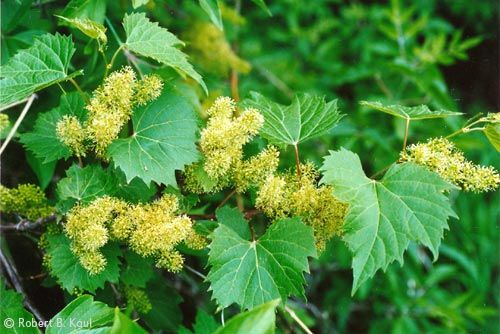
Riverbank grape, Vitis riparia, is the only grape that grows across the state, and it is common in many places. The vines are often seen on fences and at forest edges, where they can climb high into the trees. The tiny flowers, seen here, are abundant but seldom noticed, and in favorable conditions they give rise to the familiar clusters of purple grapes. Once a favorite in jams and jellies, the tart fruits have been mostly superseded for such purposes by sweeter, cultivated varieties. Three similar species grow in extreme southeastern counties.
-
Wild-Begonia
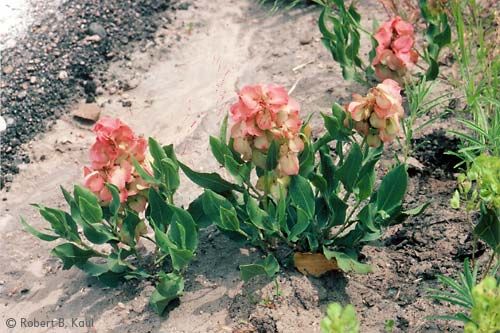
Wild-begonia, Rumex venosus, is not a true begonia but gets that name because of its fanciful resemblance to them. It is a member of the buckwheat family. A common plant of dunes and sandy roadsides in the Sandhills and elsewhere, it's colorful fruiting sepals are conspicuous.
-
Columbian Watermeal
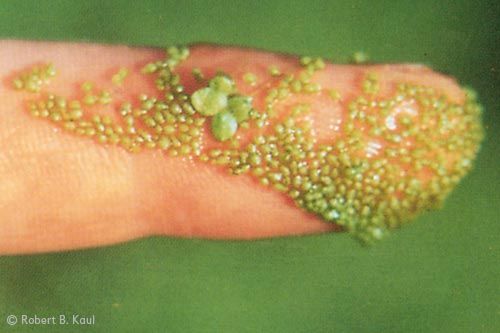
Columbian watermeal, Wolffia columbiana, is one of three look-alike species of Wolffia in Nebraska. Pinhead sized, they are the world’s tiniest plants to bear flowers. Often massively abundant floating on warm, quiet, unpolluted waters almost anywhere in Nebraska, the plants are seldom noticed. They have no roots, stems, or leaves, but instead are a mass of green cells, and the only clue that they are true flowering plants is their minuscule flowers, which are too small to be seen except under a microscope. The Wolffia are seen here with a larger relative, duckweed (Lemna) on a finger.
-
Winged Pigweed
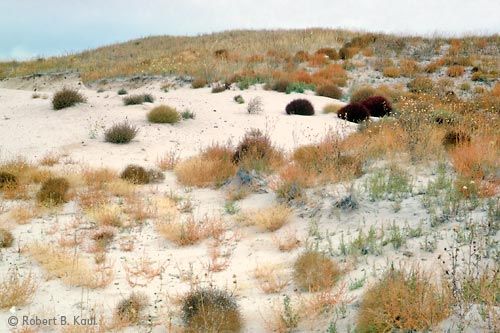
Winged pigweed, also called purple tumbleweed, Cycloloma atriplicifolium, is seen here in autumn in its typical habitat of loose, dry sands. A native, annual plant, its intriguing autumn coloration makes it stand out in the landscape. After frosts, the plants are wrenched from the sands by the winds and bounce away as tumbleweeds, thus spreading their seeds.
-
Arrowhead
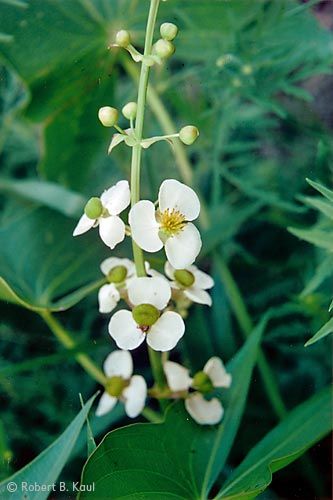
Arrowhead, Sagittaria brevirostra, is common in wet places in eastern Nebraska and often forms extensive, luxuriant colonies. Five species of Sagittaria in Nebraska have arrowhead-shaped leaves and are called “arrowhead.” This one is most easily distinguished from the others by the depressed center of its female flowers (the ones with the green centers).
-
Bush Morning-Glory
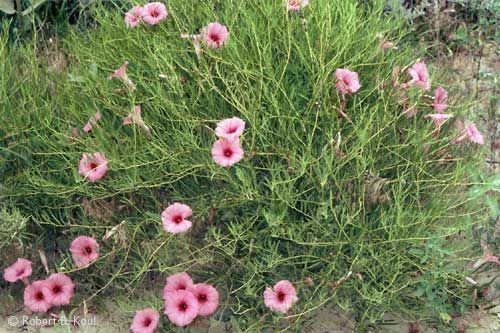
Bush morning-glory, Ipomoea leptophylla, is a common member of the morning glory family in the Sandhills and other sandy places in Nebraska’s western two-thirds. A long-lived, bushy herb, not a vine like true morning glories, it is spectacular when in flower. It develops a huge tuber deep underground, with roots reaching even farther down. In autumn, the plant breaks at ground level and tumbles across the sands, releasing its seeds, and new growth emerges the following spring.
-
Butterfly Milkweed
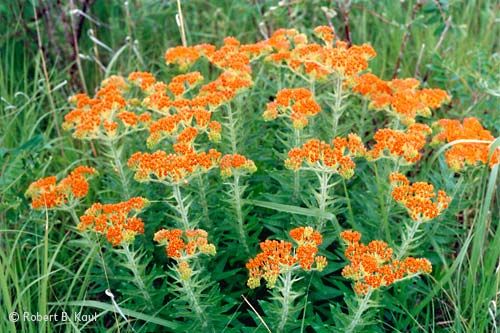
Butterfly milkweed, Asclepias tuberosa, grows in virgin prairies and other grasslands in the eastern half of Nebraska, but it is seldom abundant. It bears masses of vivid red-orange flowers over a long period. It is often cultivated for ornament, along with other color variants from outside Nebraska. The narrow, hairy leaves are unlike those of other milkweeds in Nebraska, and the plant does not exude milky juice when injured.
-
Columbine
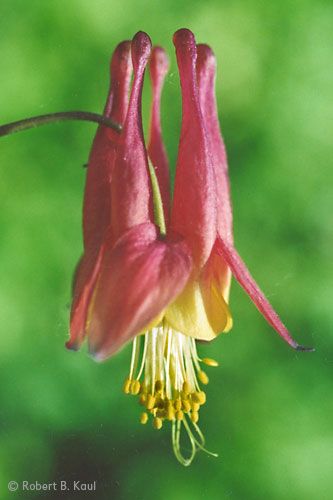
Columbine, Aquilegia canadensis, is also called honeysuckle, one of several unrelated plants of that name. It is common in eastern Nebraska’s oak forests and across the northern tier of counties, to the Wyoming border. Its distinctive flowers cannot be mistaken for any others. In 1833, Prince Maximilian of Germany saw it in what is now Sarpy County on his expedition up the Missouri River, and it grows there today.
-
Fremont's Clematis
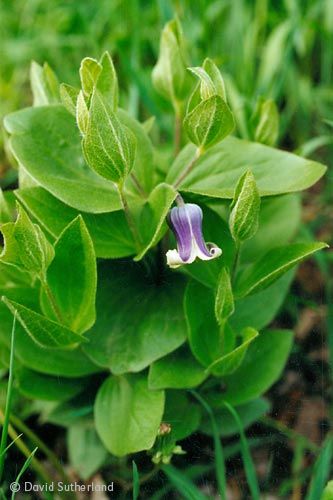
Fremont’s clematis, Clematis fremontii, is also called Fremont’s leather-flower. Not a climbing plant like the familiar garden ornamentals, it is a low, herbaceous but almost shrublike plant of rocky or limestone outcrops in the southernmost tier of counties. It has recently become commercially available as a garden plant.
-
Purple Pincushion Cactus

Purple pincushion cactus, Coryphantha vivipara, grows in sandy to rocky prairies of central and western Nebraska, where its brilliant flowers are seldom seen because they last less than a day.
-
Ponderosa Pine
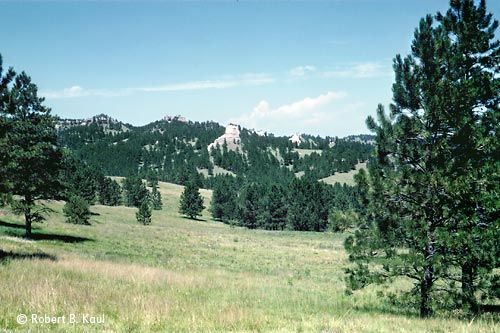
Ponderosa pine, Pinus ponderosa, is the dominant tree in the Pine Ridge (seen here), Wildcat Hills, and parts of the Niobrara Valley. It ranges from the Pacific Coast to central Nebraska. Limber pine, Pinus flexilis, the only other pine native to Nebraska, is known only from a few places in the southern Panhandle. Several North American and European pines are commonly planted across the state.
-
Prairie Trout Lily
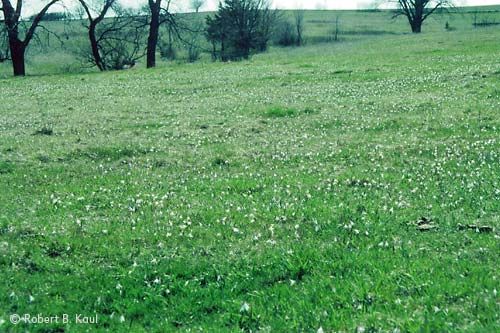
Prairie trout-lily, Erythronium mesochoreum, in a grazed, never-plowed prairie in Saunders County, mid-April. This native member of the lily family and close relative of tulips was once a common plant in southeastern Nebraska, but when the prairies almost disappeared under the plow, it became rare. This photograph of the largest remaining colony we knew was taken in 1995; the prairie was plowed under in 1999. A close relative is the dog’s-tooth “violet,” also called fawn-lily or trout-lily, which is similar but with spotted leaves and is still abundant in some eastern-Nebraska oak forests.
-
Prairie Trout Lily
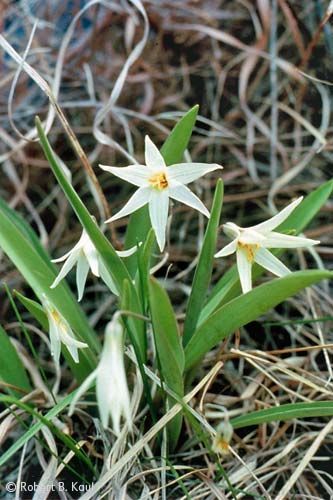
Prairie trout-lily, Erythronium mesochoreum, is a native member of the lily family and close relative of tulips. It was once a common plant in southeastern Nebraska prairies, but as the prairies disappeared it became rare. It blooms in mid-April, before the prairie grasses grow tall, and its nodding flowers open only on warm, sunny days. A close relative is the dog’s-tooth “violet,” also called fawn-lily or trout-lily, which is similar but has spotted leaves and is still common in some eastern-Nebraska oak forests.
-
Ponderosa Pine
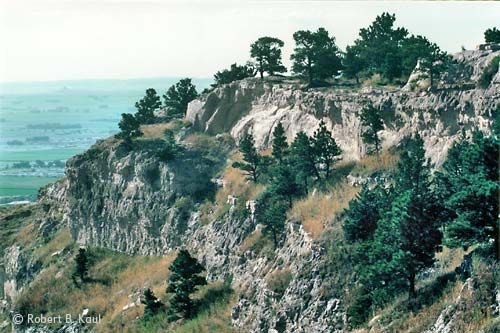
Ponderosa pine, Pinus ponderosa, on Scotts Bluff at Scotts Bluff National Monument, overlooking the broad floodplain of the North Platte River. It is dominant there and in the Wildcat Hills, Pine Ridge, and western Niobrara Valley. Limber pine, Pinus flexilis, the only other pine native to Nebraska, is known only from a few places in the southern Panhandle. Several other North American and European pines are commonly planted across the state, but ponderosa pine is less often grown outside its native range.
-
Sullivant's Milkweed
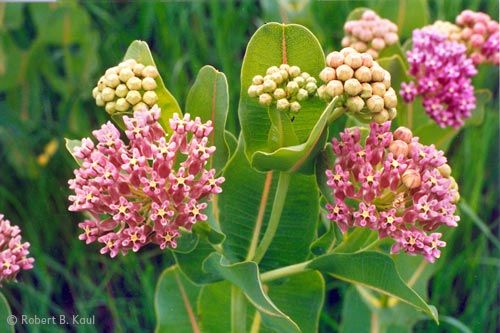
Sullivant’s milkweed, Asclepias sullivantii, is a handsome, non-weedy, native milkweed of eastern Nebraska. It is rapidly declining in Nebraska because of its intolerance of disturbance and loss of habitat. It is most easily distinguished from common species of broad-leaved milkweeds by its less-hairy leaves.
-
Tallgrass Prairie
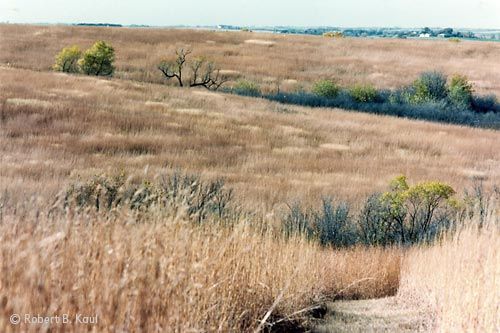
Ninemile Prairie, in Lancaster County. This remnant, virgin tallgrass prairie of 240 acres is seen here in October. The path (lower right) cut through the grasses gives an idea of their height, about four feet. The prairie has about 330 native species and is far from homogeneous, but only a hint of its diversity is seen in the patchwork of drying grasses. This healthy prairie is kept weed- and shrub-free by periodic, controlled spring burning. It was the site of many important ecological studies in the first half of the 20th Century. Owned by the University of Nebraska, it is managed by that organization, with help from citizen volunteers.





